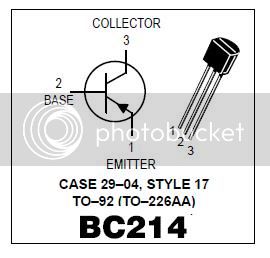Hank Dussen
Well-known member
I did meter them and it kept showing me that they were positioned correct. But now it appears the EBC/CBE-labeling is wrong.
Electrochronic, so what you're actually sayings is that since the printing is incorrect, I am the first who inserted the BC214's correctly as it was labelled!
And thus wrong... :-\
Anyway, I'll reposition them.
Which brings me to the next question: How much heat, for how long, can these (old) transistors take? I only a hand pump for desoldering so they'll feel some heat.
Should I try to borrow a good desoldering machine for this?
Or just buy new ones, being the capitalistic consumer that I am?
Electrochronic, so what you're actually sayings is that since the printing is incorrect, I am the first who inserted the BC214's correctly as it was labelled!
And thus wrong... :-\
Anyway, I'll reposition them.
Which brings me to the next question: How much heat, for how long, can these (old) transistors take? I only a hand pump for desoldering so they'll feel some heat.
Should I try to borrow a good desoldering machine for this?
Or just buy new ones, being the capitalistic consumer that I am?















